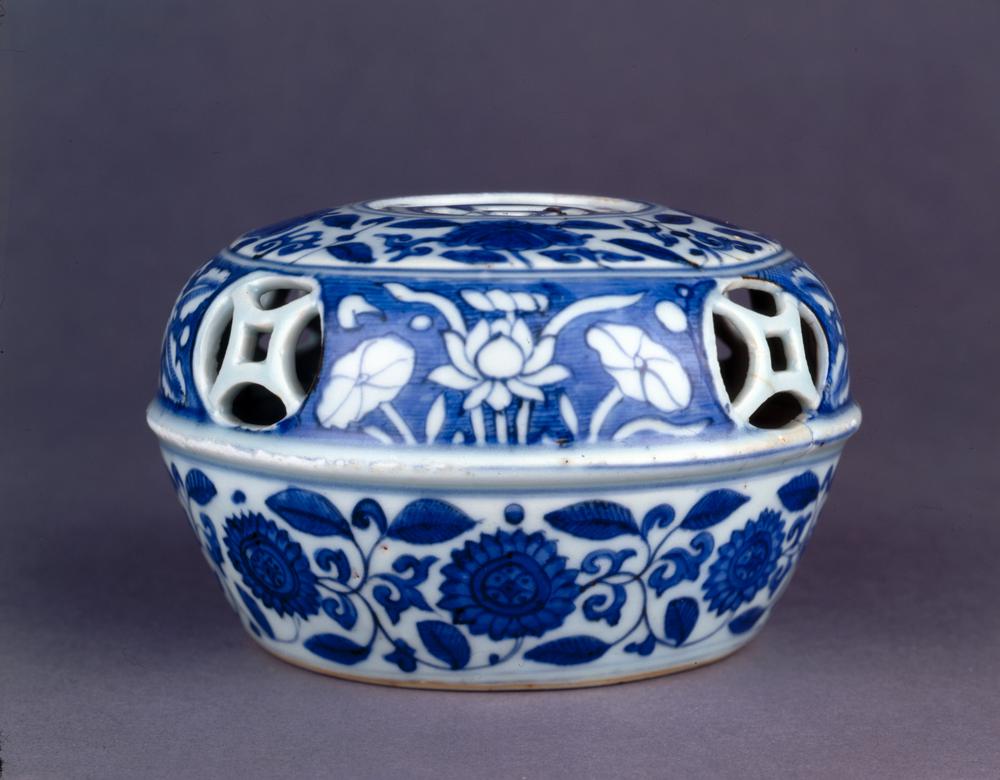Period:Five Dynasties and Ten Kingdoms Production date:926-975 (circa)
Materials:silk, 絲綢 (Chinese),
Technique:painted
Subjects:bodhisattva 菩薩 (Chinese)
Dimensions:Height: 339 centimetres (length) Width: 30 centimetres
Description:
A long banner of standing bodhisattvas. Painted in yellow colour on blue silk.
IMG
![图片[1]-painting; banner; 繪畫(Chinese); 幡(Chinese) BM-1919-0101-0.214.1-China Archive](https://chinaarchive.net/Five Dynasties and Ten Kingdoms/Paintings/mid_00000318_001.jpg)
![图片[2]-painting; banner; 繪畫(Chinese); 幡(Chinese) BM-1919-0101-0.214.1-China Archive](https://chinaarchive.net/Five Dynasties and Ten Kingdoms/Paintings/mid_00000347_001.jpg)
![图片[3]-painting; banner; 繪畫(Chinese); 幡(Chinese) BM-1919-0101-0.214.1-China Archive](https://chinaarchive.net/Five Dynasties and Ten Kingdoms/Paintings/mid_00000348_001.jpg)
![图片[4]-painting; banner; 繪畫(Chinese); 幡(Chinese) BM-1919-0101-0.214.1-China Archive](https://chinaarchive.net/Five Dynasties and Ten Kingdoms/Paintings/mid_00000349_001.jpg)
![图片[5]-painting; banner; 繪畫(Chinese); 幡(Chinese) BM-1919-0101-0.214.1-China Archive](https://chinaarchive.net/Five Dynasties and Ten Kingdoms/Paintings/mid_00000350_001.jpg)
![图片[6]-painting; banner; 繪畫(Chinese); 幡(Chinese) BM-1919-0101-0.214.1-China Archive](https://chinaarchive.net/Five Dynasties and Ten Kingdoms/Paintings/mid_00000401_001.jpg)
![图片[7]-painting; banner; 繪畫(Chinese); 幡(Chinese) BM-1919-0101-0.214.1-China Archive](https://chinaarchive.net/Five Dynasties and Ten Kingdoms/Paintings/mid_00000402_001.jpg)
Comments:EnglishFrom Whitfield 1983:The use of yellow on a dark blue ground, as seen here, was certainly intended as a substitute for gold on dark blue, as used in the writing of sutras in China, Japan and Korea. A single Bodhisattva in gold on blue paper, thought perhaps to be the frontispiece to a sutra, is in the Pelliot collection (Bannieres, No. 183) but is very much maller, as well as being more carefully drawn than those done in yellow on silk.The width of silk used strongly suggests that, like the dated banner of the preceding plate, these two strips originally hung side by side as a very long banner joined at the top. This would seem to be confirmed since a banner in the Pelliot collection (Bannieres, No. 182) in the same technique still has the two strips side by side, with a single figure of a standing Bodhisattva spanning the whole width of both strips at the top. That banner is at present 580 cm long, but a further single strip in Paris (Bannieres, No. 182 bis) is 800 cm long, roughly the same as the combined lengths of the two strips shown here. Given the close similarities of silk width, colour and line between all these fragments, it seems entirely possible that they all form part of a single banner some fourteen metres or more in length. This length of fourteen metres, or forty-five and a half feet, comes remarkably close, allowing for minor losses and breaks, to the “forty-nine” feet given as the length of the inscribed banner in the preceding plate.A fragment of another banner in yellow on blue is also in the Stein collection (Fig. 76). It has two sections sewn together: the upper part of pale blue and the lower of dark blue silk. The design on both is very hard to make out: a Bodhisattva above, and a long trailing stem of flowers and leaves on the darker section below. ChineseFrom Whitfield 1983:藍底上配黃色線描的這兩件幡,目的是産生與存留於中國、日本、韓國的藍紙金字經相同的,藍底上配金的組合的色彩效果。伯希和收集品中,有藍色紙上用金泥描繪的獨立菩薩像,儘管可能是經典的扉畫(參照伯希和圖錄《敦煌幡和繪畫》篇圖版183)。紙上的畫像尺寸比此畫小很多,但在畫法上,遠比此絹畫作品細緻。從絹的幅寬看,與圖32的幡相同,本來是上端部分相連,而下方是像本圖半幅一樣的並排的兩條。這一點,看伯希和收集品中的也是藍底上黃色線描的幡(參照伯希和圖錄《敦煌幡和繪畫》篇圖版182)很明確,上端絹幅上的獨立的菩薩立像佔滿了整幅絹的寬度,其下方則分成兩條。那幡的長度現在有580釐米長,而伯希和收集品中還有一件長有8米的作品(參照伯希和圖錄《敦煌幡和繪畫》篇圖版182bis),等於斯坦因收集品的圖34和35兩件幡的長度之合。以上所述的幡,絹幅、絹底以及線描顔色等方面幾乎是相同的,因此可以認爲它們曾同是構成14米左右長的一件幡。所謂14米或者45.5英尺的長度,包括殘缺破損部分,當時應該與圖32幡的題記中所記錄的四十九尺長極其接近。斯坦因收集品中,另外還有一件青色底上用黃色畫像的幡的斷片(參照Fig.76)。它是由兩種絹縫合而成,上方爲淡青色,下方則是深藍色。兩者的圖案部分都幾乎無法辨別,似乎上方是菩薩,下方是花和葉子的長莖。
Materials:silk, 絲綢 (Chinese),
Technique:painted
Subjects:bodhisattva 菩薩 (Chinese)
Dimensions:Height: 339 centimetres (length) Width: 30 centimetres
Description:
A long banner of standing bodhisattvas. Painted in yellow colour on blue silk.
IMG
![图片[1]-painting; banner; 繪畫(Chinese); 幡(Chinese) BM-1919-0101-0.214.1-China Archive](https://chinaarchive.net/Five Dynasties and Ten Kingdoms/Paintings/mid_00000318_001.jpg)
![图片[2]-painting; banner; 繪畫(Chinese); 幡(Chinese) BM-1919-0101-0.214.1-China Archive](https://chinaarchive.net/Five Dynasties and Ten Kingdoms/Paintings/mid_00000347_001.jpg)
![图片[3]-painting; banner; 繪畫(Chinese); 幡(Chinese) BM-1919-0101-0.214.1-China Archive](https://chinaarchive.net/Five Dynasties and Ten Kingdoms/Paintings/mid_00000348_001.jpg)
![图片[4]-painting; banner; 繪畫(Chinese); 幡(Chinese) BM-1919-0101-0.214.1-China Archive](https://chinaarchive.net/Five Dynasties and Ten Kingdoms/Paintings/mid_00000349_001.jpg)
![图片[5]-painting; banner; 繪畫(Chinese); 幡(Chinese) BM-1919-0101-0.214.1-China Archive](https://chinaarchive.net/Five Dynasties and Ten Kingdoms/Paintings/mid_00000350_001.jpg)
![图片[6]-painting; banner; 繪畫(Chinese); 幡(Chinese) BM-1919-0101-0.214.1-China Archive](https://chinaarchive.net/Five Dynasties and Ten Kingdoms/Paintings/mid_00000401_001.jpg)
![图片[7]-painting; banner; 繪畫(Chinese); 幡(Chinese) BM-1919-0101-0.214.1-China Archive](https://chinaarchive.net/Five Dynasties and Ten Kingdoms/Paintings/mid_00000402_001.jpg)
Comments:EnglishFrom Whitfield 1983:The use of yellow on a dark blue ground, as seen here, was certainly intended as a substitute for gold on dark blue, as used in the writing of sutras in China, Japan and Korea. A single Bodhisattva in gold on blue paper, thought perhaps to be the frontispiece to a sutra, is in the Pelliot collection (Bannieres, No. 183) but is very much maller, as well as being more carefully drawn than those done in yellow on silk.The width of silk used strongly suggests that, like the dated banner of the preceding plate, these two strips originally hung side by side as a very long banner joined at the top. This would seem to be confirmed since a banner in the Pelliot collection (Bannieres, No. 182) in the same technique still has the two strips side by side, with a single figure of a standing Bodhisattva spanning the whole width of both strips at the top. That banner is at present 580 cm long, but a further single strip in Paris (Bannieres, No. 182 bis) is 800 cm long, roughly the same as the combined lengths of the two strips shown here. Given the close similarities of silk width, colour and line between all these fragments, it seems entirely possible that they all form part of a single banner some fourteen metres or more in length. This length of fourteen metres, or forty-five and a half feet, comes remarkably close, allowing for minor losses and breaks, to the “forty-nine” feet given as the length of the inscribed banner in the preceding plate.A fragment of another banner in yellow on blue is also in the Stein collection (Fig. 76). It has two sections sewn together: the upper part of pale blue and the lower of dark blue silk. The design on both is very hard to make out: a Bodhisattva above, and a long trailing stem of flowers and leaves on the darker section below. ChineseFrom Whitfield 1983:藍底上配黃色線描的這兩件幡,目的是産生與存留於中國、日本、韓國的藍紙金字經相同的,藍底上配金的組合的色彩效果。伯希和收集品中,有藍色紙上用金泥描繪的獨立菩薩像,儘管可能是經典的扉畫(參照伯希和圖錄《敦煌幡和繪畫》篇圖版183)。紙上的畫像尺寸比此畫小很多,但在畫法上,遠比此絹畫作品細緻。從絹的幅寬看,與圖32的幡相同,本來是上端部分相連,而下方是像本圖半幅一樣的並排的兩條。這一點,看伯希和收集品中的也是藍底上黃色線描的幡(參照伯希和圖錄《敦煌幡和繪畫》篇圖版182)很明確,上端絹幅上的獨立的菩薩立像佔滿了整幅絹的寬度,其下方則分成兩條。那幡的長度現在有580釐米長,而伯希和收集品中還有一件長有8米的作品(參照伯希和圖錄《敦煌幡和繪畫》篇圖版182bis),等於斯坦因收集品的圖34和35兩件幡的長度之合。以上所述的幡,絹幅、絹底以及線描顔色等方面幾乎是相同的,因此可以認爲它們曾同是構成14米左右長的一件幡。所謂14米或者45.5英尺的長度,包括殘缺破損部分,當時應該與圖32幡的題記中所記錄的四十九尺長極其接近。斯坦因收集品中,另外還有一件青色底上用黃色畫像的幡的斷片(參照Fig.76)。它是由兩種絹縫合而成,上方爲淡青色,下方則是深藍色。兩者的圖案部分都幾乎無法辨別,似乎上方是菩薩,下方是花和葉子的長莖。
© Copyright
The copyright of the article belongs to the author, please keep the original link for reprinting.
THE END
![[Qing Dynasty] British female painter—Elizabeth Keith, using woodblock prints to record China from the late Qing Dynasty to the early Republic of China—1915-China Archive](https://chinaarchive.net/wp-content/uploads/2022/11/image-191x300.png)




